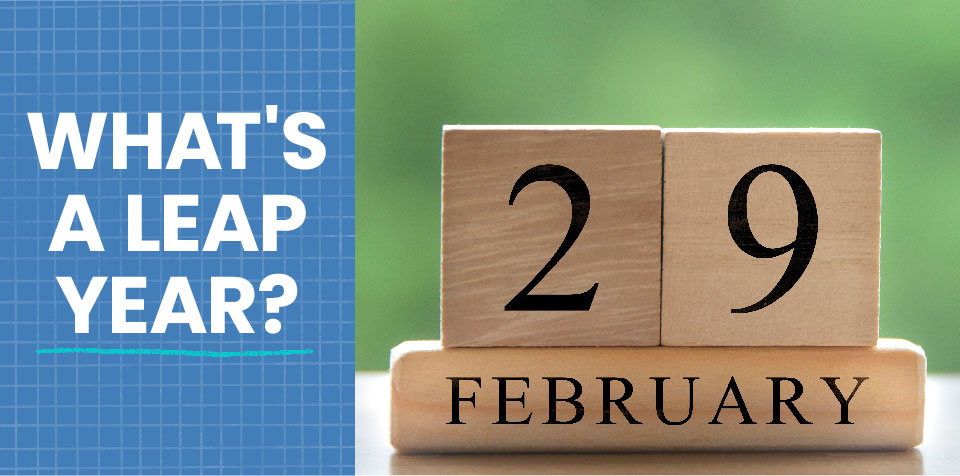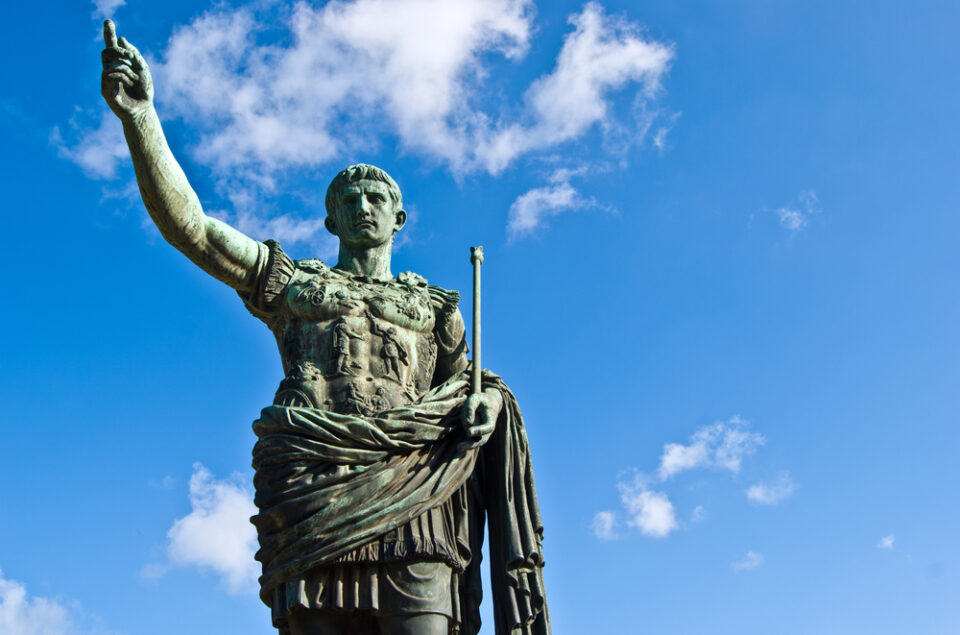
Leap Years: The History and Importance of February 29
When children learn about the months of the year, they’re often taught a traditional rhyme:
“Thirty days has September,
April, June, and November,
All the rest have thirty-one,
But February’s twenty-eight,
The leap year, which comes once in four,
Gives February one day more.”
Kids have recited this poem in one form or another since the 1400s—in other words, leap years have existed for a long time. But have you ever wondered why every fourth February “has one day more?”
The answer involves Earth’s orbit, ancient calendars, the ancient Roman emperor Julius Caesar, and Catholic Pope Gregory XIII. Let’s learn what leap years are and why they matter.

Solar Years and Leap Years: What’s the Difference?
Today, most of the world—including the U.S.—follows the Gregorian calendar to keep track of the days, months, and years. This calendar is based on the position of Earth as it orbits the Sun, breaking the year into 365 days across 12 months. But this calculation has a slight problem: It actually takes more than 365 days for Earth to complete its orbit.
According to astronomers, it takes exactly 365 days, 5 hours, 48 minutes, and 46 seconds for Earth to travel around the Sun. This measurement is called a “solar year,” and it rounds to about 365.25 days. If we ignored this extra quarter day, eventually it would add up. In 100 years, our calendar would be 25 days off, making the seasons out of sync with the months. We add an extra day to the calendar to account for this difference, and we call the years with these additional days “leap years.”How often is a leap year? Leap years occur every four years to account for the four missed quarter days. The month of February goes from 28 days to 29, resulting in 366 days in a leap year.

The History of Leap Years
Early civilizations noticed the difference between the solar year and their calendars, and some cultures tried to “make up” the time in unique ways.
The ancient Egyptians had perhaps the most fun approach. For a while, they marked the year with 12 months of 30 days, followed by five days of parties that weren’t considered part of the year.
The ancient Romans used a 10-month calendar that ended with a winter period that varied in length. Sometimes, winter lasted through January and February—but other times, the Romans added a 23-day month called “Mercedonius” in the middle of February to extend the winter. Unfortunately, the Roman consuls (the politicians of the time) were in charge of declaring when Mercedonius would take place, and they often made the year shorter or longer for their own political benefit.

Ultimately, Julius Caesar introduced leap days to the greater world. After some advice from astronomer Sosigenes of Alexandria, Caesar brought a new calendar to the Roman Empire in 46 BCE. This calendar was 365 days long and included an extra day every four years, much like the calendar we use today. However, the calendar in Rome was already so off-track from the solar year that Caesar had to extend 46 BCE to 445 days! After two extra months in what became known as “the Year of Confusion,” the new Julian calendar (named for Julius Caesar) went into effect in 45 BCE.
But the Julian calendar wasn’t perfect either. Caesar had assumed a solar year was 365 days and 6 hours, but we now know it to be 365 days, 5 hours, 48 minutes, and 46 seconds. That 11-minute difference caused problems as it accumulated over the years.
By the sixteenth century, the calendar was about 10 days off, and Easter was arriving too late in the spring. Pope Gregory XIII sought to correct this by creating his own calendar in 1582. First, Pope Gregory made October of 1582 only 21 days long (sorry, Halloween). This helped the calendar “catch up” with the Sun’s position. Then, he developed new criteria for a leap year: The calendar would have a leap year every fourth year, but it would lose three leap days every 400 years to account for those pesky 11 minutes. This became known as the Gregorian calendar, which we still use today!

The Importance of Leap Years
While the extra few hours between a calendar year and a solar year may seem like a small difference, they have a big impact. If we didn’t have leap years, our calendars wouldn’t match up with the seasons. Kids might start school in the spring instead of the fall, or the U.S. might have the Fourth of July in the middle of winter! Leap years guarantee the calendar we follow aligns with our position around the Sun.
Why Is It Called a Leap Year?
A typical year is 52 weeks and one day long. This means that every year, each date moves by one day of the week. For example, say your birthday was on a Monday one year. It would be on a Tuesday the next year and a Wednesday the year after. But if the following year is a leap year, that extra day on the calendar means your birthday will “leap” over Thursday and land on a Friday. This is why we call 366-day years “leap years.”

Leap into Even More Learning
Leap day may seem like a funny quirk of the calendar, but it keeps us aligned with the Sun and the seasons. Wondering when the next leap year is? It’s 2024! Then we’ll have leap years in 2028, 2032, 2036, and so on. And what about that “skipped” leap year Pope Gregory added? The last one was in 1900, and the next will occur in 2100.
If your family enjoyed learning about Earth’s orbit and how it shapes the calendar, you might enjoy these cool facts about asteroids and planets, or one of our favorite space-themed crafts.

